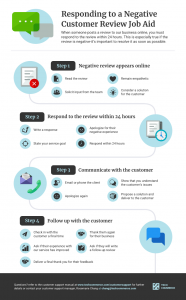 You’ve been blogging, emailing and converting website visitors to leads for months now, and you get the sense your potential clients are more engaged. People are commenting on your posts.
You’ve been blogging, emailing and converting website visitors to leads for months now, and you get the sense your potential clients are more engaged. People are commenting on your posts.
Maybe a few have even mentioned they read something you recently published.
You’re delighted—until you realize you still have no concrete evidence to prove your worth as a content marketer to your boss.
At Kuno, we hear this concern often.
“People have told us they really like what we’re putting out there,” a client will say. “They’ve come up to us at trade shows, and sometimes they’ve even called us. But we can’t prove we’re getting new customers because of our content marketing.”
Actually, you can. You just have to focus on the right numbers.
Don’t Get Caught Up in Metrics Madness
Mark Twain once said that most people use statistics the way a drunkard uses a lamp post, more for support than illumination.
It’s easy to lean on weekly performance reports to help us validate what we’re doing, but taking the time to glean valuable insight from them takes more effort.
As Cutter’s Jonathan Becher explains, it’s easy to get distracted by mere metrics. Marketers today have so many tools at their disposal to measure every aspect of performance, from email open rates and click-through rates to social media impressions.
So what makes a metric a KPI? Becher notes marketing KPIs should be:
-
Outcome-oriented, or tied to a specific objective such as customer satisfaction
-
Target-based, meaning they have a time-sensitive goal
-
Rated or graded, meaning you can easily measure the gap between the target and what’s actually achieved
Most importantly, they should demonstrate the return on investment that’s directly related to your content marketing efforts.
Just paying attention to ROI can improve it, as HubSpot’s 2014 State of Inbound Marketing report found. The annual survey of more than 3,500 marketers shows marketers who measure inbound ROI are 17 times more likely to see the same or greater ROI over the previous year.
There are specific key performance indicators, though, all marketers can measure to show their efforts are paying off. There’s some debate about which ones are more important and how many you actually need, but in our experience, here’s where you should focus your attention.
Customer Acquisition Costs
HubSpot CMO Mike Volpe lists this first among what he believes are the six KPIs your CEO actually wants to see. What is it actually costing you to close the deal with each new customer from the time they first interact with your website or other content? This figure has a tendency to get lost when inbound marketing is treated as a separate campaign that works in addition to your other marketing efforts, rather than in conjunction with them.
That’s why you can’t look at inbound marketing in isolation. Consider all the advertising and marketing you’re doing now and the total costs of implementing them, including the salaries of your marketing and sales staff and any work you outsource. Then look at the leads that are actually coming in. Inbound marketing that’s done correctly, alongside other traditional marketing efforts, allows you to generate more leads with fewer resources, reducing your cost per lead.
If you make it your goal to reduce customer acquisition costs—and can prove you’ve accomplished this—your executives will be more likely to respond to your budget requests.
Once you’ve figured out your customer acquisition costs, find out where marketing fits into those figures. If you have complicated products or services and it takes some time for your sales teams to explain them, marketing may represent 10-20 percent of your total customer acquisition costs. If your products are relatively simple, marketing will likely represent a higher percentage, sometimes as high as 60-90 percent.
Focus on setting a realistic goal to reduce these costs over time.
Customer Lifetime Value Compared to Customer Acquisition Cost
For software as a service (SaaS) companies where clients pay monthly fees, this ratio is especially important, according to John Stoddart, marketing director at Highfields PF Limited.
Consider the average length of time the customer is likely to stay with you, based on typical churn rates, and multiply that by the gross margin from the customer across that length of time. This will give you a total lifetime value for your average customer.
Time to Pay Back CAC
Once you’ve established your customer acquisition costs, figure out how long it takes you to earn that back. The formula is simple: Take the CAC and divide by margin-adjusted revenue per month for the average new customer, and you’ll get the number of months until you’ll see the payback.
In most industries, including SaaS, you’ll want to see those costs paid off in less than a year. Stoddart says it’s best if the payoff happens right around the six-month mark.
Qualified Leads
If your website is inviting and you’re producing quality content, you should be seeing a significant increase in the number of leads coming in. It might be tempting to start celebrating right then, but you need to make sure they’re the right kind of leads for your business. Be prepared to get a fair amount of dead ends who may have just stumbled on your content and were curious about what you had to say but have no interest in buying. A lead-scoring system is essential to helping you determine the level of interest a prospective customer has and how likely he or she is to consider a purchase in the near future.
You might assign points for downloading a guide and assign a higher score to someone who has not only done that, but also looked at your pricing page or requested a demo. Someone who opens an email once but then unsubscribes could have points taken away. Don’t forget to consider demographic factors as well, such as the person’s title, industry, department and purchasing power.
Your sales and marketing teams should work together to determine what factors indicate someone is ready for a phone call and when they need more time. Lead scoring will also help weed out those who aren’t a good fit for your product or service. For more on how to use lead scoring to determine quality leads, check out this post by Kuno’s technology director, Dan Stasiewski.
Marketing Originated Customer Percentage
You need to know what percentage of your new business is driven by your marketing efforts. Figuring this out can take some time, but it’s well worth the effort. Take all the new customers you acquired within a period of time, and determine how many of them came into your system through a lead generated in your marketing system. It’s much easier to pinpoint this if you have a closed-loop marketing system where data can easily be exchanged between your marketing software and sales CRM.
This percentage will vary depending on your industry. For outside sales, it’s most likely going to be lower, in the 20-40 percent range, according to Volpe. It should be significantly higher for inside sales and those that don’t require a lot of personal contact to convince customers to buy.
Marketing Influenced Customer Percentage
You already know marketing plays a significant role in influencing customers to buy, but you may not have realized you could quantify this, too. When you’re trying to demonstrate the value you bring to your company, this number is essential.
It takes into consideration all the instances where marketing nurtured a lead at any point in the sales process. This percentage can vary depending on your business, but for most companies, Volpe says it should be between 50-99 percent.
These indicators are a good way to measure the overall success of your content marketing efforts. You might find you don’t need all of these, or you might consider adding others.
Other content marketing KPIs to consider could include total conversion rates as a percentage of the leads coming in, customer retention rates and satisfaction rates over a period of time. Marketing isn’t solely responsible for them, but your department does play a role.
Get into the habit of tracking these and reporting on them to your executive team. You’ll feel more confident in your role as a marketer when you can prove your efforts directly result in sales. And the next time your CEO is looking at where your company can afford to cut back, he or she won’t be so tempted to slash your budget.
What KPIs do you measure? Which do you think are most telling? Share with us in the comments below.
Business Articles | Business 2 Community
(390)










